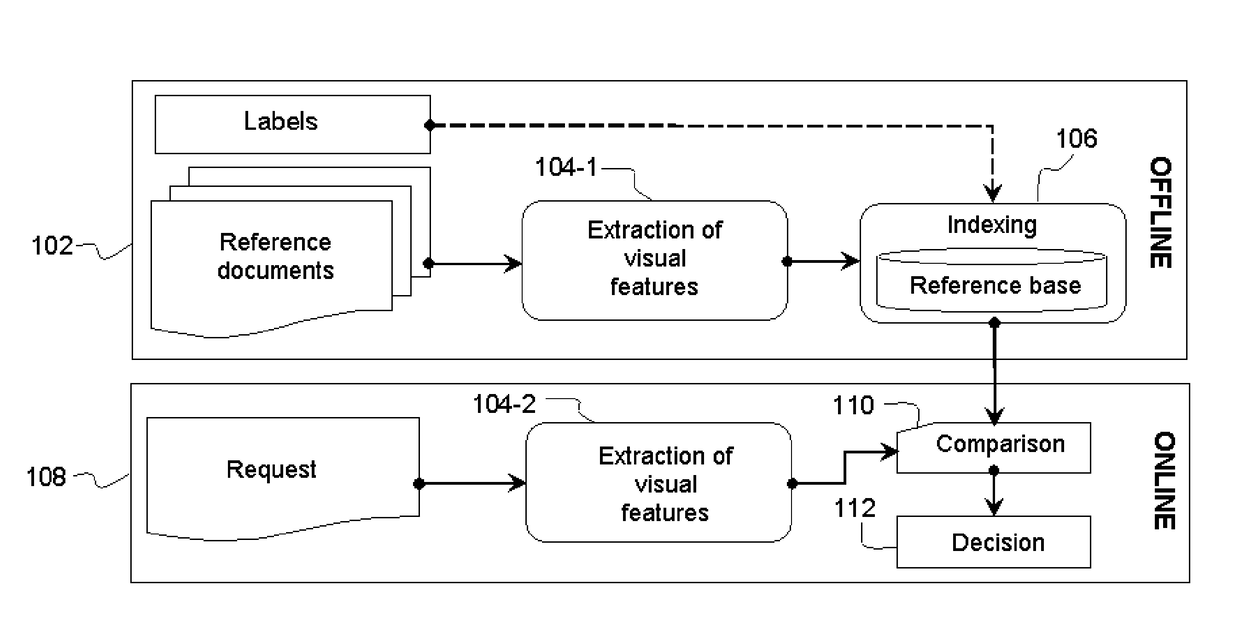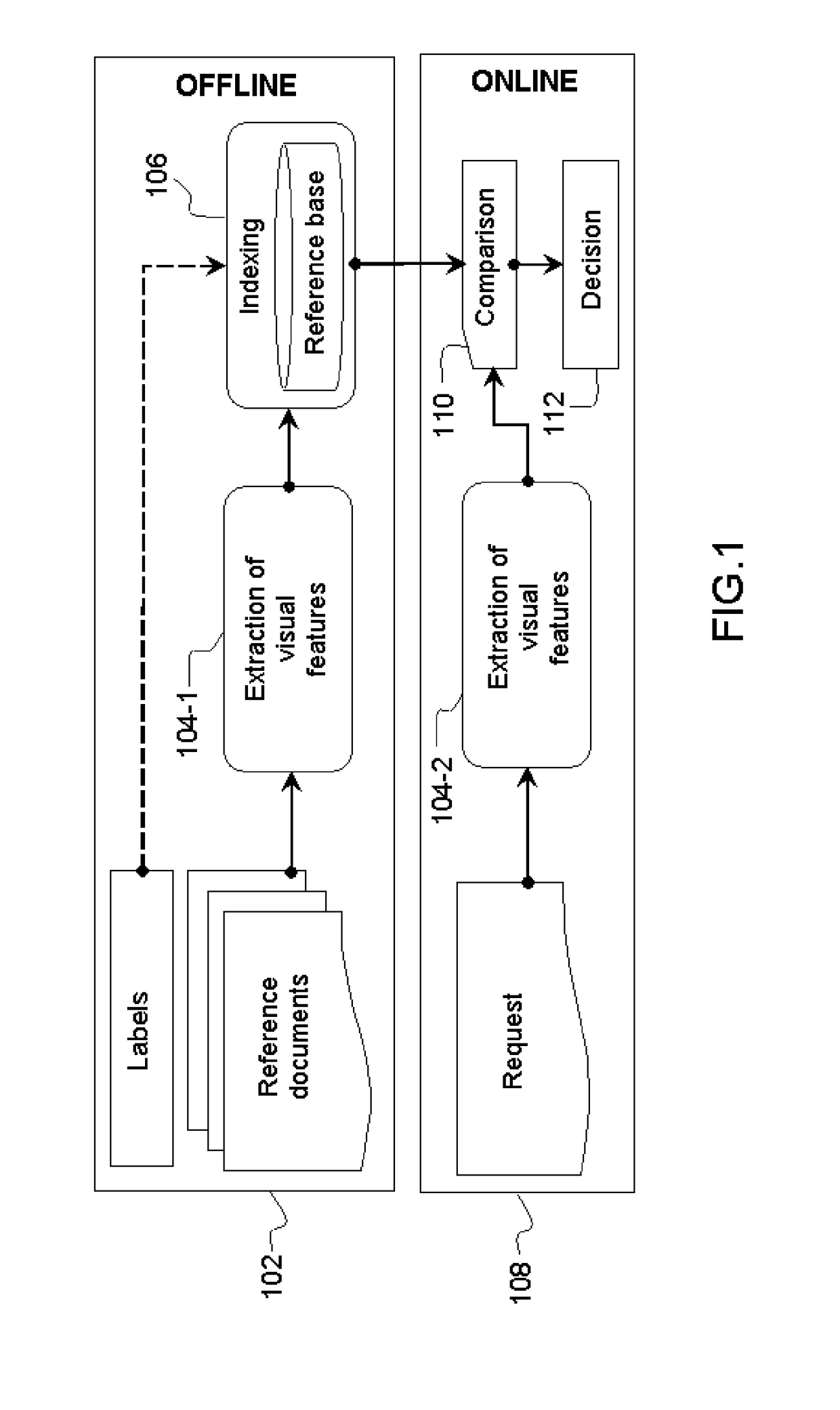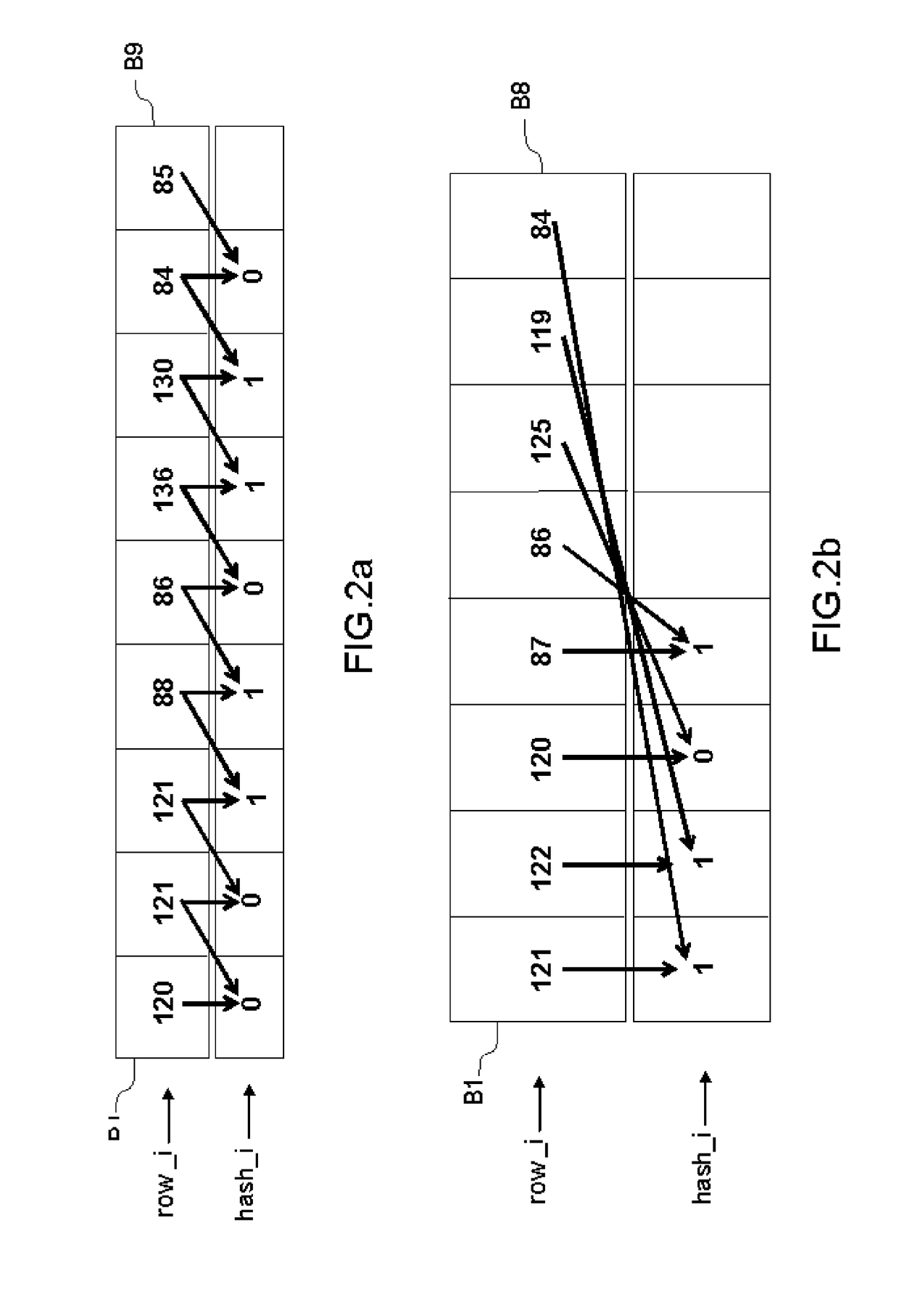Method and device for detecting copies in a stream of visual data
a visual data and stream detection technology, applied in the field of multimedia document transmission and exchange, can solve the problems of insufficient indexing time (signature computation), inability to compute local features, and difficulty in employing signatures based on local features transformation and compression, so as to achieve quick and exhaustive searching and generate image signatures.
- Summary
- Abstract
- Description
- Claims
- Application Information
AI Technical Summary
Benefits of technology
Problems solved by technology
Method used
Image
Examples
Embodiment Construction
[0063]Reference is made to FIG. 3 which shows the main steps of the method of the invention for computing an overall signature for an image, i.e. the construction of an overall descriptor for the image. The method of the invention may be implemented using software and hardware elements. The software elements may be present in the form of a computer program product on a medium that can be read by the computer, which medium may be electronic, magnetic, optical or electromagnetic. The hardware elements may be wholly or partly present in the form of application-specific integrated circuits (ASICs) or field-programmable gate arrays (FPGAs), or in the form of a digital signal processor (DSP) or a graphics processing unit (GPU).
[0064]The method (300) is implemented within a device for extracting visual features, such as that shown in FIG. 1 (104-1, 104-2). The method is applied in disconnected offline mode while a reference image base is being set up, and operated in continuous online mode...
PUM
 Login to View More
Login to View More Abstract
Description
Claims
Application Information
 Login to View More
Login to View More - R&D
- Intellectual Property
- Life Sciences
- Materials
- Tech Scout
- Unparalleled Data Quality
- Higher Quality Content
- 60% Fewer Hallucinations
Browse by: Latest US Patents, China's latest patents, Technical Efficacy Thesaurus, Application Domain, Technology Topic, Popular Technical Reports.
© 2025 PatSnap. All rights reserved.Legal|Privacy policy|Modern Slavery Act Transparency Statement|Sitemap|About US| Contact US: help@patsnap.com



